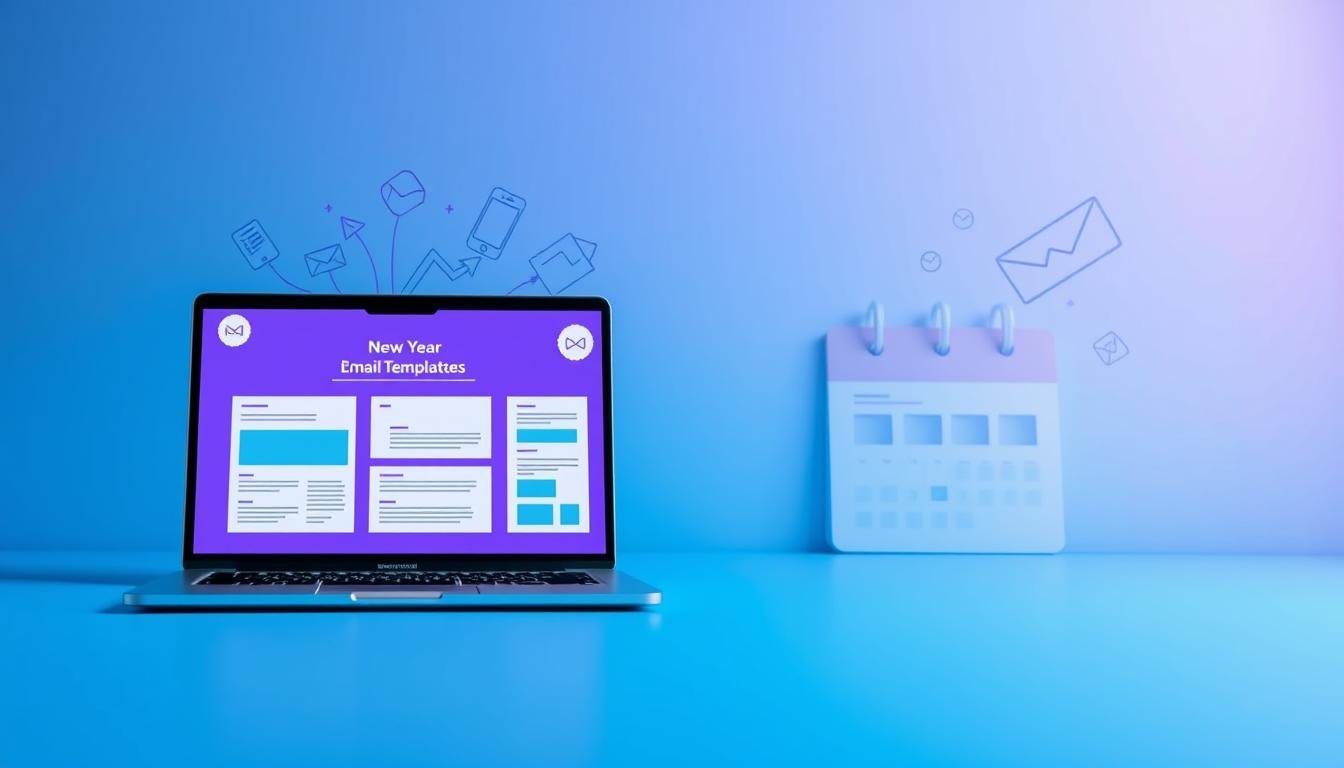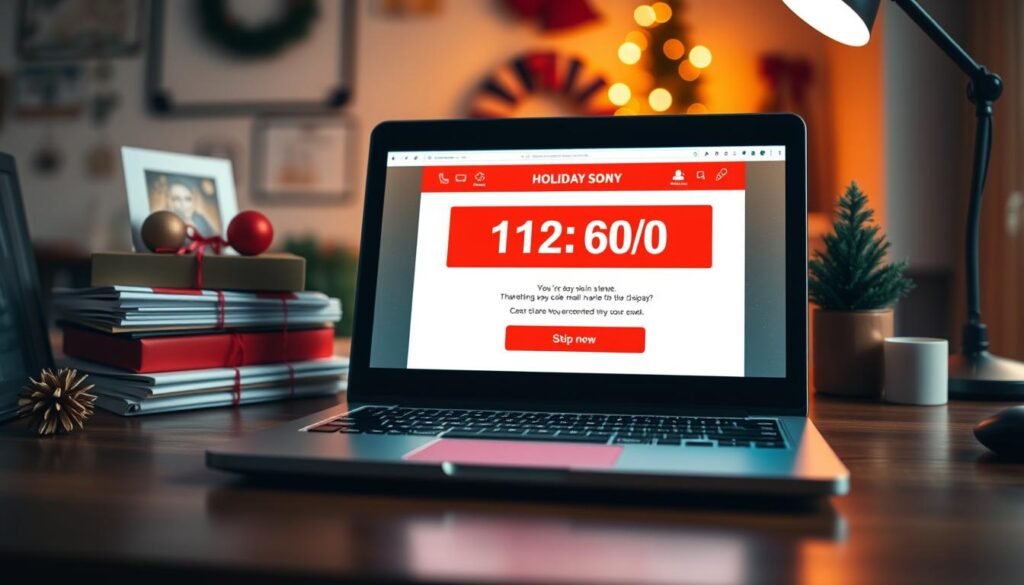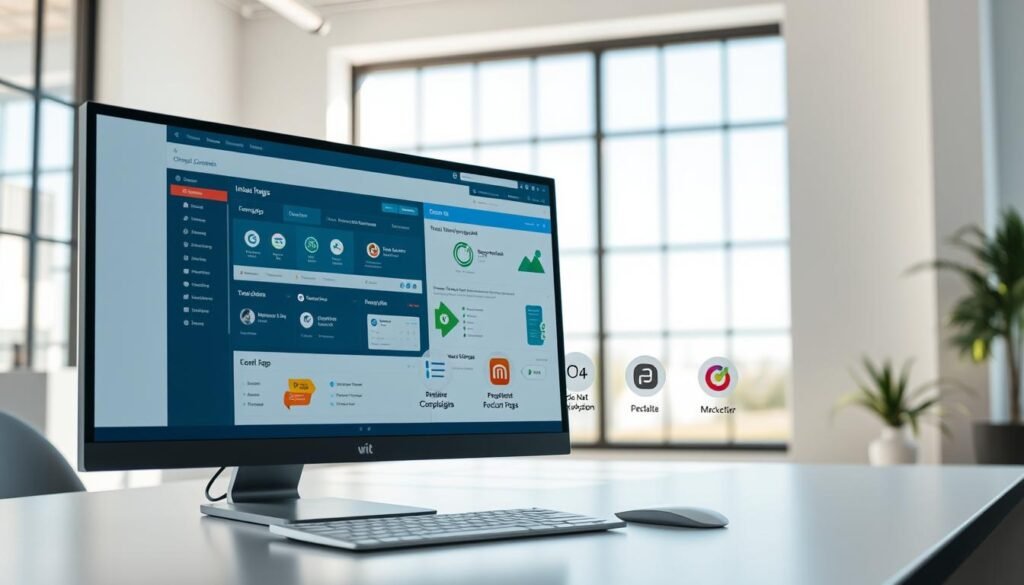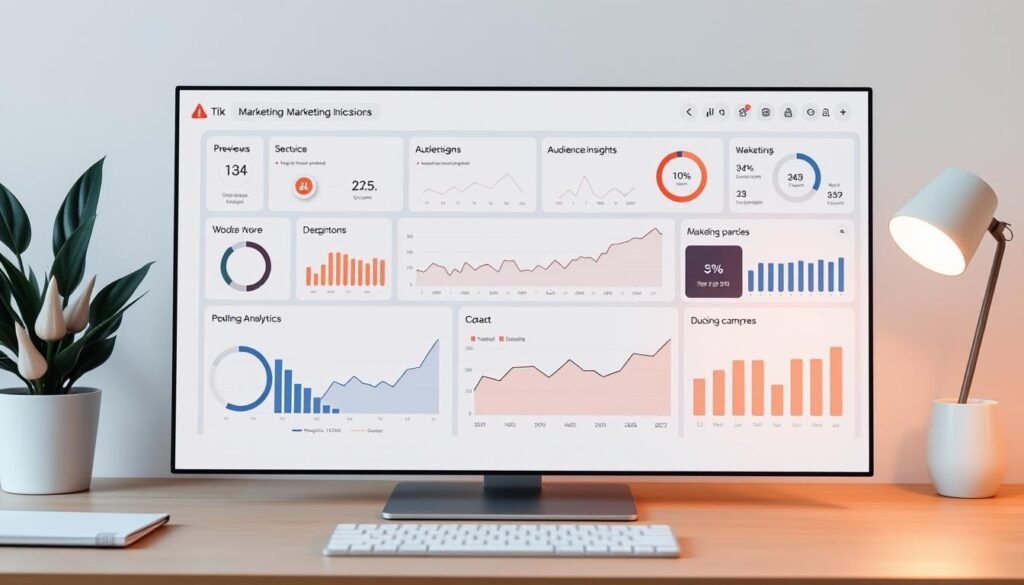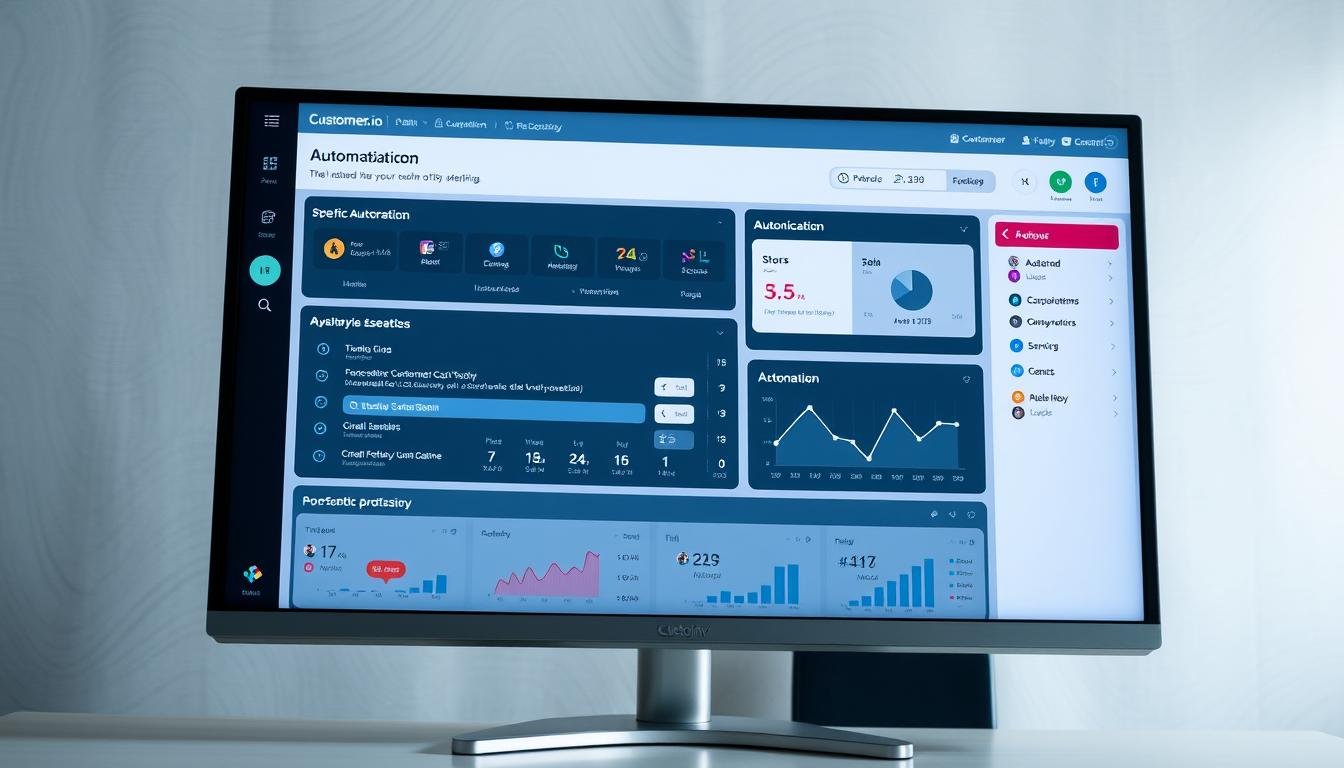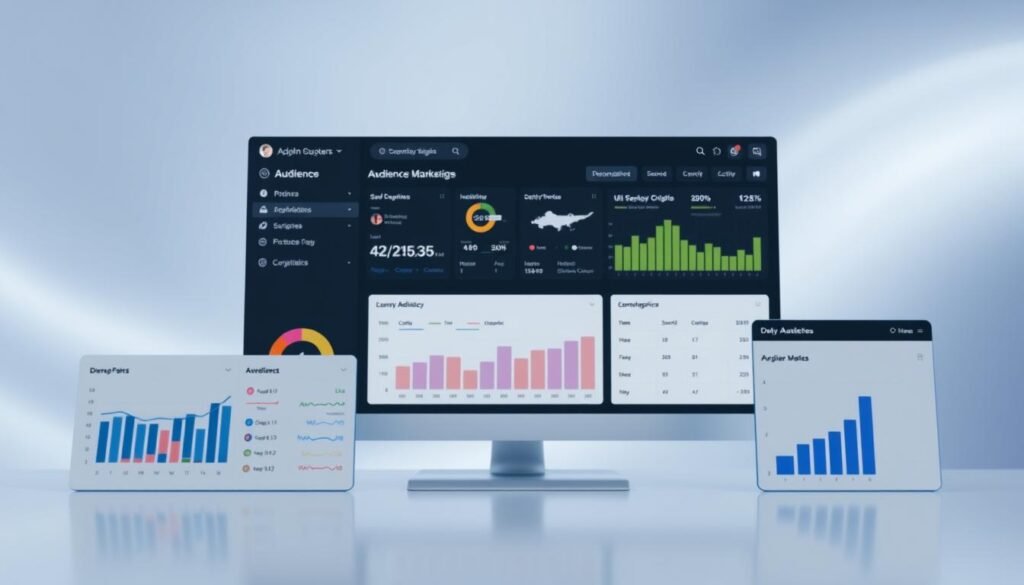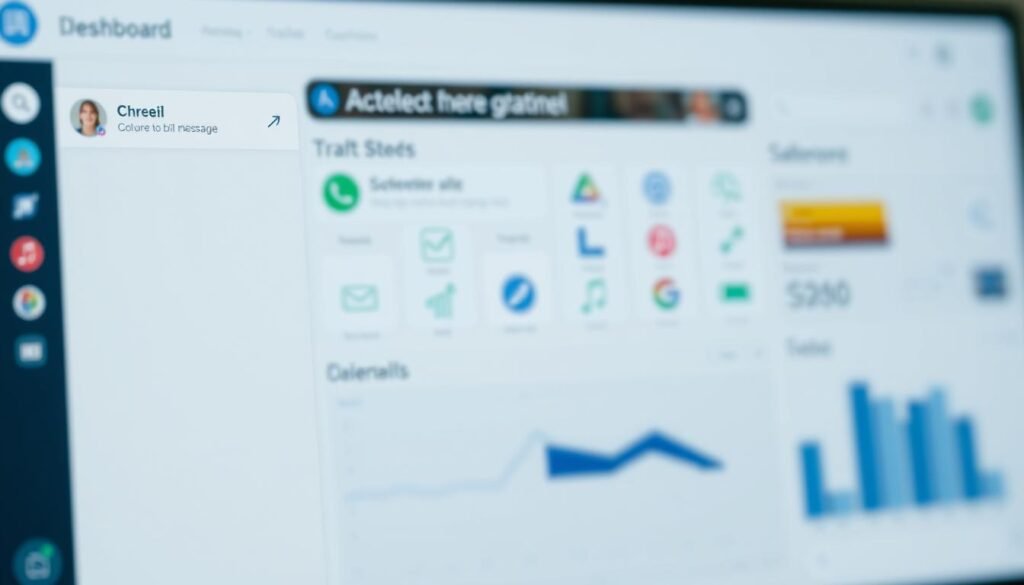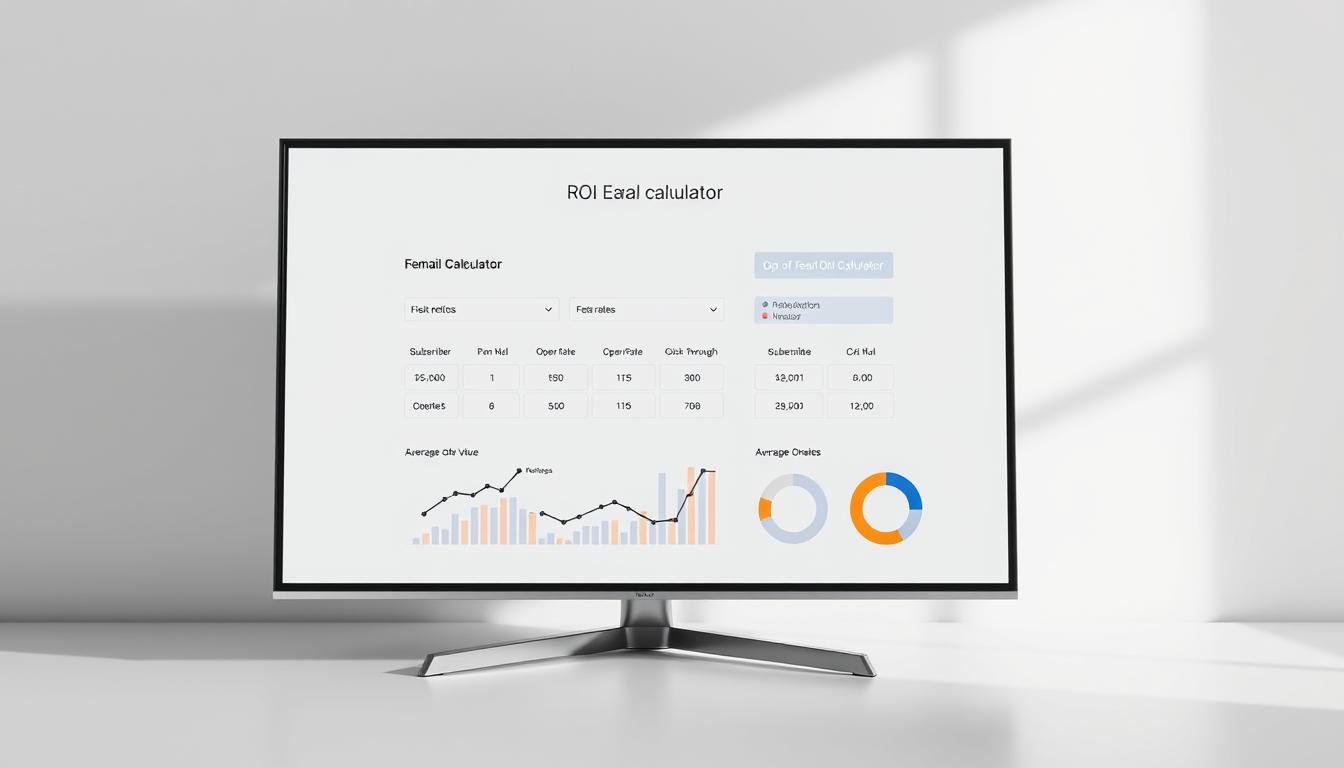Remember that quiet moment after the holidays? When the decorations come down and you finally have space to breathe? That’s exactly where your customers are right now—reflecting on what matters and planning for what comes next.
This post-holiday period creates a powerful opening for connection. According to Klaviyo’s research, audiences are more receptive to thoughtful messaging when they’re relaxed and thinking about their aspirations. This makes January 2025 a golden opportunity for meaningful engagement.
You face a delicate balance: creating compelling content that inspires action without overwhelming people who may be experiencing post-holiday fatigue. The challenge is real, but so is the potential. With email delivering an impressive $36 return for every $1 spent, it remains one of your most effective channels.
This guide provides 31 actionable concepts with ready-to-use templates, making sophisticated strategies accessible regardless of your team’s size. You’ll discover how thoughtful new year marketing campaigns can set the tone for customer relationships throughout the coming months.
Key Takeaways
- January presents a unique window for engagement when audiences are reflective and planning
- Email marketing delivers exceptional ROI, making it ideal for post-holiday outreach
- 81% of businesses find that email efforts boost customer retention and acquisition
- Balance inspiration with sensitivity to audience fatigue and budget constraints
- Ready-made templates make sophisticated strategies accessible to teams of any size
- Early-year campaigns establish relationship momentum that lasts throughout 2025
- Personalized, thoughtful messaging resonates deeply during this reflective period
Embracing the New Year Opportunity
The post-holiday period represents a strategic goldmine for thoughtful marketers. Customers naturally reflect on the past twelve months while planning for what comes next. This psychological shift creates an ideal environment for meaningful engagement.
Your marketing strategy should leverage this transitional season. People are more receptive to messages that acknowledge their journey and aspirations.
Reflecting on Past Successes and Customer Trends
Begin by analyzing your previous marketing performance. Identify what resonated with your audience and which approaches drove results. This retrospective analysis forms the foundation for effective planning.
Successful brands like Spotify demonstrate the power of looking backward. Their “Wrapped” campaign transforms user data into personalized stories that create emotional connections.
Mine your customer data to understand purchasing patterns and engagement trends. This insight helps you build campaigns that feel personally relevant to your audience.
| Retrospective Approach | Key Benefit | Implementation Tip |
|---|---|---|
| Personalized Year-End Summaries | Creates emotional connection | Use customer-specific data points |
| Performance Analysis | Identifies successful strategies | Review metrics from peak seasons |
| Trend Identification | Reveals customer preferences | Track purchasing patterns over time |
Setting Clear Marketing Goals for 2025
Use your findings to establish specific objectives for the coming months. Your goals should align with both business needs and customer expectations during this transitional time.
Position your outreach as a bridge between past experiences and future possibilities. This creates continuity in your marketing narrative while capitalizing on the reflective mood.
The quiet period after Christmas offers perfect timing for thoughtful messaging. Customers are less rushed and more open to meaningful communication.
Understanding Your Audience and Their Resolutions
Your customers’ personal aspirations become your most valuable marketing asset each January. Research shows approximately two-fifths of Americans under 30 make New Year’s resolutions, with health, personal improvement, and travel ranking highest.
This psychological shift creates natural alignment opportunities. Fitness brands connect with health goals, while tech companies support productivity aspirations.
Identifying Customer Aspirations
Effective audience segmentation begins with understanding what drives your people. Analyze past behaviors and demographic data to predict which resolutions different customer segments will pursue.
Practical methods for gathering this insight include:
- Interactive surveys that engage subscribers
- Quizzes that reveal personal goals
- Behavioral tracking of browsing patterns
Aligning Email Content with New Year Resolutions
Position your products as enablers of personal transformation rather than mere purchases. Craft messaging that speaks directly to resolution-related pain points while maintaining authenticity.
Klaviyo’s research confirms 74% of shoppers expect personalization. Your content should demonstrate genuine understanding of customer journeys throughout the year.
Integrating Pillar Content with Cluster Email Campaigns
Building a cohesive content ecosystem transforms your marketing approach from scattered efforts to strategic connections. The pillar-cluster model organizes your materials around comprehensive guides (pillars) supported by specific topics (clusters). This structure creates natural pathways for subscriber exploration.
Strategies for Effective Interlinking
Your communications serve as gateways to deeper content exploration. Weave links to pillar pages throughout your messages, creating touchpoints that drive traffic to valuable resources. Identify cluster topics that naturally align with your themes for maximum relevance.
Map your communication calendar to your content calendar for synchronized delivery. This ensures every message reinforces your broader strategy and topical authority. Analytics reveal which linked materials resonate most with subscribers.
| Interlinking Approach | Primary Benefit | Implementation Method |
|---|---|---|
| Pillar Page References | Establishes topical authority | Link to comprehensive guides from related messages |
| Cluster Content Integration | Provides specific solutions | Connect to detailed articles addressing subscriber needs |
| Analytics-Driven Refinement | Optimizes engagement pathways | Track click-through rates on linked content |
Focus on creating natural, value-driven connections rather than forced links. As one content strategist notes,
The most effective interlinking feels like helpful guidance rather than promotional pushing.
This approach enhances subscriber experience while building a robust content network. Your communications become both standalone value and exploration gateways.
new year email campaigns: Creative Tactics for Engagement
The right combination of visual design and compelling copy creates communications that stand out in crowded inboxes. These approaches transform routine outreach into memorable experiences.
Inspiring Templates and Design Ideas
Methodical Coffee demonstrates effective design by emulating Spotify’s Wrapped experience. They highlight top-selling products using personalized “you” language.
Brooklinen’s approach shows how animated GIFs and action-oriented language create urgency. Consider these design elements for your communications:
- Color psychology that matches the reflective January mood
- Mobile-optimized layouts for on-the-go viewing
- Visual hierarchy that guides readers through your message
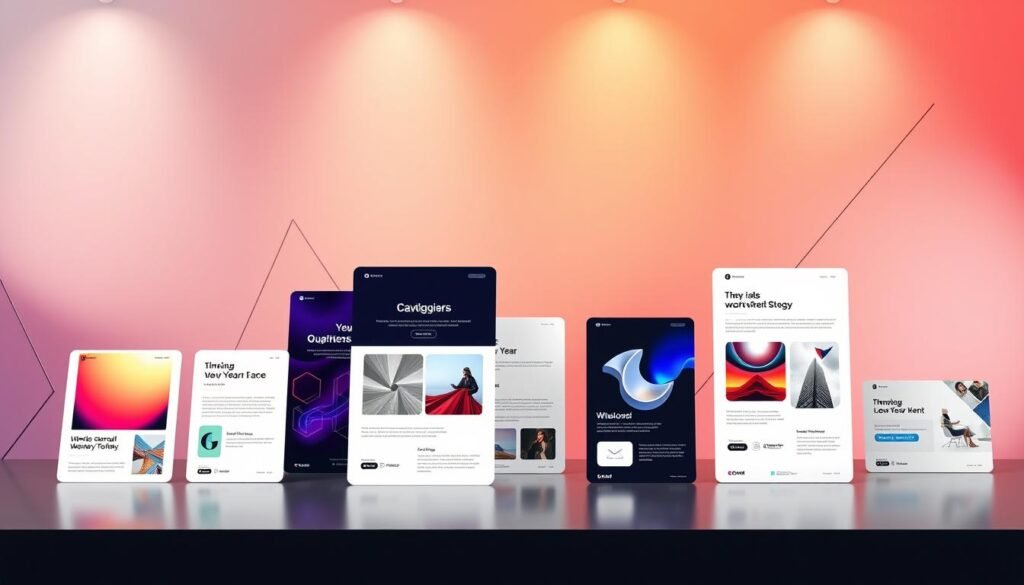
Effective Messaging Techniques to Drive Action
Dunkin’ Donuts proves concise messaging works well. Their approach features clear prize listings in subject lines.
Evolve Skateboards shows how highlighting mutual value drives sharing. Research indicates customers prefer money-off deals over percentage discounts.
For New Year’s Eve party promotions, create excitement for time-sensitive celebrations. Adapt your approach for different audience preferences.
Explore our email design best practices for more inspiration. These frameworks help maintain brand voice while implementing proven strategies.
Leveraging Data to Personalize Your Email Approach
Your customer data holds the key to transforming generic outreach into deeply personal conversations. Klaviyo’s research confirms that 74% of shoppers now expect this level of individual attention from brands. This strategic approach is crucial for connecting with people who may feel overwhelmed after a busy season.
Utilizing Customer Purchase and Browsing Data
Intelligent use of historical information allows you to craft messages that anticipate needs. Mine last year’s purchase data to create relevant product recommendations. This feels helpful, not pushy.
Browsing behavior reveals clear intent. Target subscribers who showed interest in specific items but didn’t complete a purchase. This recaptures lost opportunities effectively.
Brands like Naked Nutrition use quizzes as smart sign-up forms. They educate customers on best-fit products while gathering high-quality data for future personalization.
Segmenting Your Audience for Targeted Messaging
Advanced segmentation moves beyond basic demographics. Create groups based on engagement patterns, purchase frequency, and resolution-related behaviors. This ensures your messaging hits the right note with each part of your audience.
AI-powered tools can now create bespoke experiences. They go beyond highlighting bestsellers to build unique journeys for each subscriber. This is the future of one-to-one communication.
As one expert notes,
Ethical personalization feels like a helpful guide, not a creepy stalker.
Always use data transparently to build trust while delivering incredible value to yourcustomers.
Aligning Email Marketing with the Post-Holiday Mood
The calendar may flip quickly from December to January, but customer engagement follows a much slower, more nuanced pattern. Understanding this rhythm separates effective outreach from wasted effort during the holiday season.
Research reveals dramatic engagement drops at specific times. Open rates plummet to just 3.5% on January 1st compared to the 13.59% annual average. This creates a significant challenge for your marketing efforts.
Timing Your Campaigns for Maximum Impact
Your campaign timing must align with psychological shifts. The post-Christmas period offers a unique window when audiences feel relaxed and reflective. People transition from frantic gift-buying to aspirational planning.

Avoid sending messages during actual celebrations. Instead, focus on the days following January 1st when motivation returns. This approach respects holiday fatigue while capitalizing on renewed energy.
Consider these timing strategies for your marketing approach:
- Schedule sends for the week between Christmas and New Year’s Eve
- Resume regular communication after January 3rd as routines normalize
- Space messages throughout January to maintain engagement without overwhelm
Strategic timing ensures your email marketing feels welcome rather than intrusive. It acknowledges the customer’s journey through the holiday season into the new year.
Incorporating Multi-Channel Strategies for Greater Reach
Modern consumers navigate seamlessly between different platforms, expecting brands to meet them wherever they prefer to engage. Klaviyo’s research reveals that 77% of omnichannel shoppers regularly use 3-4 different channels. This creates a powerful opportunity to extend your outreach beyond single-platform limitations.
Email and Social Media Integration
Integrating your communications with social platforms amplifies your message through multiple touchpoints. Graza’s giveaway approach demonstrates effective integration by requiring Instagram follows and comment tags. However, the most strategic way enhances this by collecting contact information for owned channel growth.
Social initiatives can drive significant list expansion when designed to require email submission for participation. This approach builds your owned audience while reducing reliance on expensive paid reach. With 68% of retail marketers reporting rising acquisition costs, shifting social audiences to owned channels becomes essential.
Optimizing for Mobile Engagement
Many subscribers access communications on smartphones during travel or social gatherings. Mobile optimization ensures your content remains accessible and engaging across all devices. This is particularly crucial for time-sensitive promotions that benefit from immediate visibility.
Rebels Refinery successfully uses SMS for VIP messaging, making exclusive offers feel personal and urgent. AI-powered channel affinity data helps determine subscriber preferences, allowing you to reach each person through their most-engaged medium. This personalized approach transforms generic outreach into meaningful conversations.
Showcasing Real-World Examples and Case Studies
Studying real-world brand strategies provides actionable insights you can immediately implement. These concrete examples demonstrate how successful companies translate marketing theory into measurable results.

Wellness-focused companies like Recess show how to tap into mindfulness trends. Their calm, supportive messaging aligns with self-care resolutions without feeling pushy.
Insights from Major Brands and Past Campaigns
Fashion brands offer another compelling example. Goop provides styling recommendations for celebrations, while AllSaints times pre-event sales perfectly.
Retailers with physical locations demonstrate creative solutions. Bed Bath & Beyond promotes curbside pickup for last-minute shoppers. This approach drives traffic while solving customer challenges.
Fitness companies like Sweaty Betty combine healthy living messaging with strategic offers. Their approach balances motivation with practical incentives.
Some brands use greetings as opportunities to reinforce unique selling points. Mugsy highlights shipping policies while building affinity. Brooklinen promotes bundles to increase value perception.
FluffCo’s “Fresh Start, Fresh Bed” campaign effectively uses testimonials. This makes transformation feel tangible and credible to subscribers.
For deeper analysis of these successful approaches, explore our detailed case studies. These resources break down what makes each campaign work.
Tips and Best Practices for a Successful Campaign
The difference between successful campaigns and mediocre ones often lies in the execution of fundamental best practices. Your January outreach requires careful balancing of promotional content with genuine value.
Research reveals that 75% of consumers actively search messages for relevant discounts. This makes clear value propositions essential for engagement.
Avoiding Message Fatigue and Keeping Content Relevant
Subscribers experience significant communication overload after the intense holiday season. Space your sends strategically throughout January to maintain engagement without overwhelming your audience.
Focus on providing genuine value rather than constant promotional noise. About half of Americans continue using convenient options like curbside pickup, particularly for time-sensitive purchases.
| Fatigue Prevention Strategy | Key Benefit | Implementation Tip |
|---|---|---|
| Strategic Send Timing | Reduces subscriber overwhelm | Space messages 3-4 days apart |
| Value-First Content | Maintains positive relationships | Balance promotions with helpful information |
| Audience Segmentation | Ensures message relevance | Group by engagement patterns and interests |
Crafting Clear Calls-to-Action and Engaging Subject Lines
Subject lines that directly state offers achieve better open rates. Customers prefer knowing exact savings amounts over percentage discounts.
Create concise communications with minimal text and well-structured main offers. One in eight resolutions relate to financial goals, meaning subscribers may be especially cost-conscious.
Clear value propositions feel helpful rather than pushy during budget-conscious periods.
For deeper guidance, explore our email marketing best practices pillar content and related clusters on subject line optimization and CTA design.
Conclusion
Your ability to connect with customers during this psychological shift determines your marketing success for the entire year ahead. The comprehensive framework presented here transforms January’s unique energy into lasting relationships.
Each strategy balances immediate sales objectives with long-term brand positioning. Select and adapt these approaches based on your specific audience and business goals.
Remember that thoughtful timing and genuine value cut through post-holiday fatigue. Your outreach should feel like supportive guidance rather than promotional noise.
For deeper implementation, explore our interconnected content ecosystem. The pillar pages and cluster materials referenced throughout provide specific tactical guidance to enhance your approach.
FAQ
When is the best time to send my January marketing emails?
The ideal timing depends on your audience. Sending messages in early January can capitalize on resolution-setting energy. Later in the month works well for follow-ups when initial enthusiasm might wane. Avoid the immediate post-holiday slump around January 1st-2nd.
How can I make my subject lines stand out in a crowded inbox?
Focus on clarity and value. Use action-oriented language that hints at a benefit, like “Kickstart Your 2025 Goals” or “Your January Fresh Start Awaits.” Personalization, such as including a first name, can also significantly boost open rates.
What type of content resonates most with customers after the holidays?
People are often focused on self-improvement and organization. Content that offers practical tips, inspires positive habits, or provides solutions to common challenges aligns perfectly with this mindset. Think about how your products or services support these aspirations.
Should I offer discounts in my post-holiday campaigns?
While sales can be effective, consider leading with value instead of just price. Educational content, a free challenge, or exclusive access can build stronger connections. If you do offer a promotion, frame it as a tool to help customers achieve their goals for the coming year.
How can I use data to improve my email strategy for 2025?
Analyze your past campaign performance to see what subject lines, content types, and send times generated the most engagement. Use this data to segment your audience, allowing you to send more personalized and relevant messages that drive higher conversion rates.
What is a common mistake brands make with their January messaging?
A frequent error is message fatigue. Avoid sending too many emails too quickly. Instead, space out your communications with a clear, valuable purpose for each one. Ensure every message feels like it’s helping your subscribers, not just selling to them.
